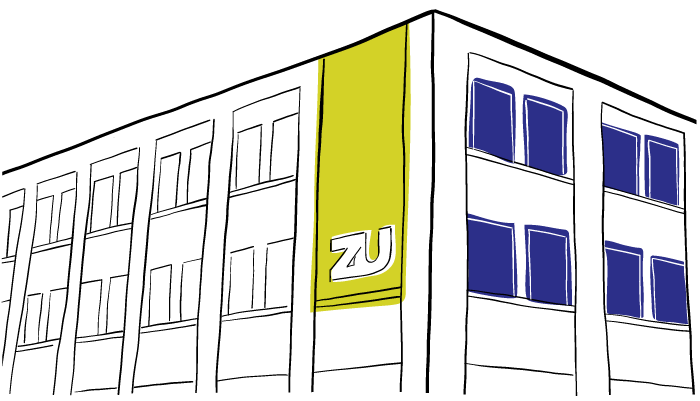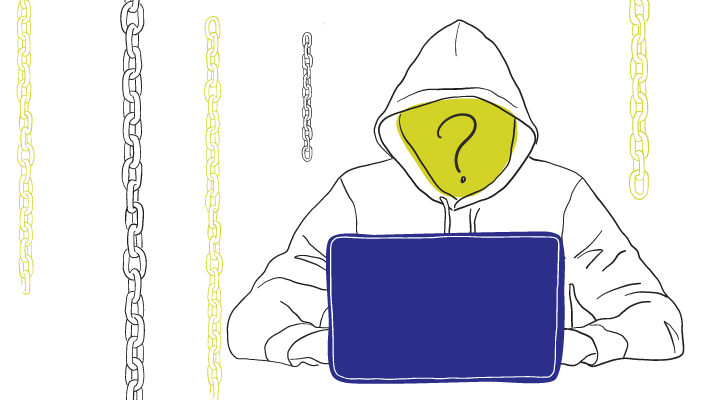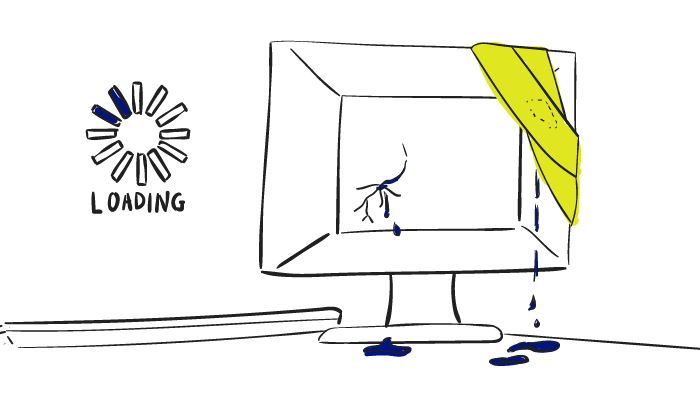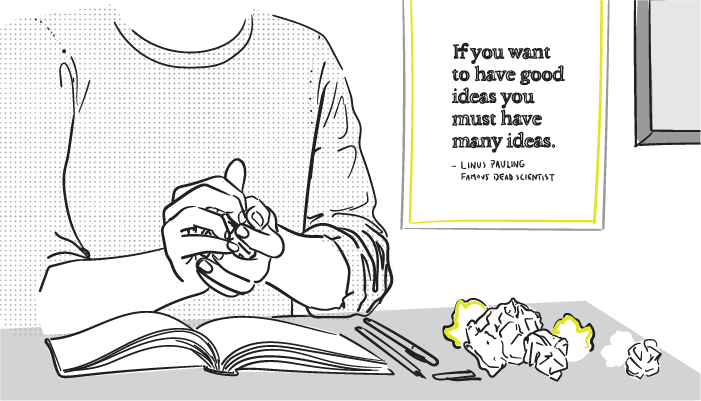
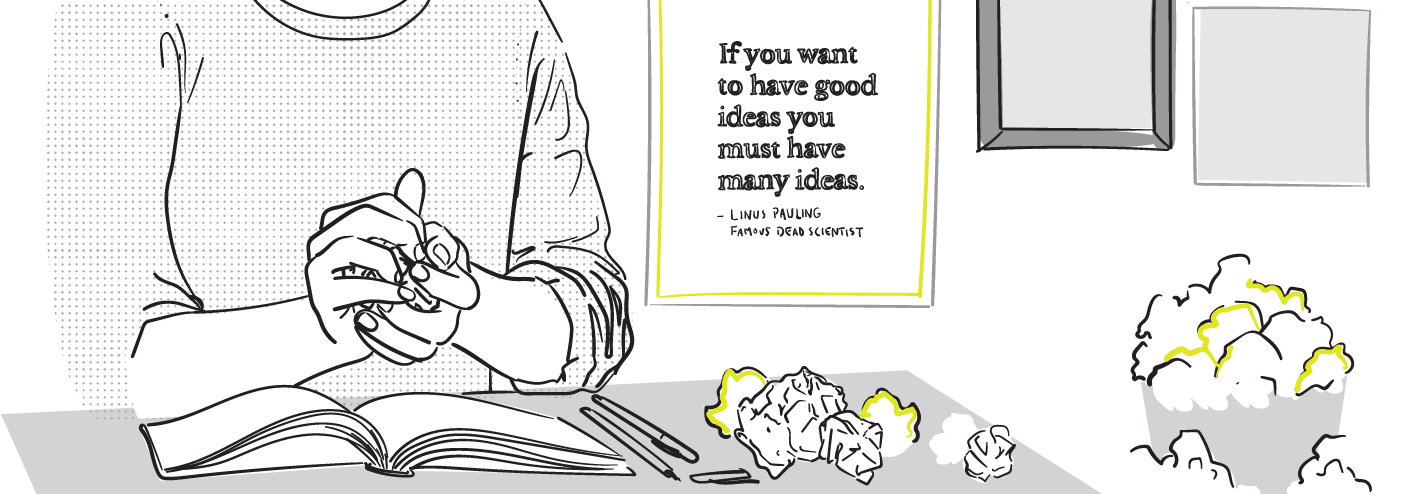
You’re Already Doing Design Thinking
You’re Already Doing Design Thinking
Read the articles inspired by the research, knowledge and experiences of our leading strategists, designers and developers.
Changes implemented by governments and employers in response to COVID-19 have left many people with newfound spare time on their hands. Depending on your perspective or situation, this could be a blessing or a curse: it’s either an opportunity, or pressure, to use this time to learn new things and build new skills. Whichever it is for you, if you’ve been meaning to learn about design thinking, you’re in luck: you’re probably already design-thinking your way through a pandemic, and you didn’t even realize it.
Design thinking is an approach to problem solving
As with most things, it’s not difficult to find some wildly varying opinions on design thinking. For us, it’s simply one of many problem-solving approaches in our toolkit. Design thinking is inspired by methods designers have used for years, but you don’t have to be a designer to understand or apply it. It’s a mindset that puts humans first, and advocates exploring many possible solutions before settling on the solution.
Our approach is built on the foundation of five common design thinking pillars: Empathize, Define, Ideate, Prototype, and Test.
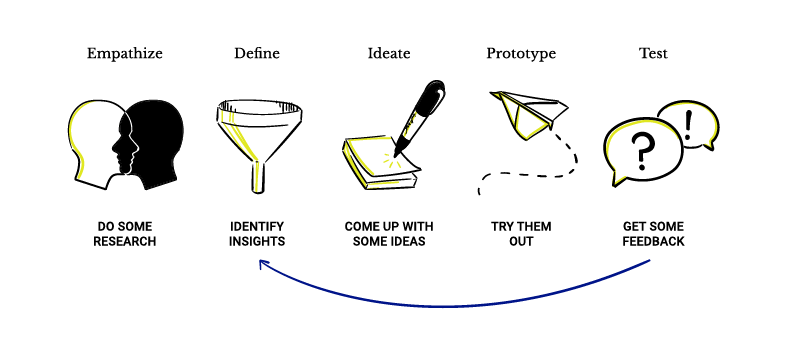
Over the many years we’ve been teaching people about design thinking, we’ve learned it can be intimidating to get started. But there’s a good chance you’re already doing it, or at least parts of it, as you navigate lifestyle changes during the COVID-19 pandemic.
Do some research
For example, you might have needed to learn about remote work, home-schooling, the virus, how to stay healthy, or how to help others. You might have read, watched, or listened. You might have talked to others. All of that is research. In design thinking, research doesn’t have to be scientific or statistically significant — it just has to help you learn. We do research to help us empathize with users and better understand their problems.
Identify insights
Then, we try to better define those problems by identifying insights about what we’ve learned. What stands out? What’s most important? Where themes are emerging? If you’ve spent time considering what you learned, and distilling the most important information to help you make decisions about what to do next, you’ve done some design thinking.
Come up with some ideas
Once we have a better understanding of our users and their problems, we try to come up with as many different ways as we can think of to solve them. In our design thinking workshops, this often involves a lot of sticky notes and sketching. Maybe you haven’t gone to that extent, but you’ve likely thought about, talked about, or written down a whole bunch of possible ways to address the new challenges in front of you. If you’ve generated many ideas to solve the problem you defined, then narrowed down the best ones — you guessed it, you’re doing design thinking.
Try them out and get some feedback
Now, you may not think you’ve prototyped any of your ideas, but I bet you’ve done that, too. People tend to have some very specific notions about prototypes, but I love Jake Knapp’s definition from his book, Sprint: How to Solve Big Problems and Test New Ideas in Just Five Days:
Quite simply, a prototype is anything a person can look at and respond to.
If you put your best idea into some tangible form, then showed it to someone to get feedback — congratulations! You made and tested a prototype.
Proper prototyping and testing are, of course, more involved (and somewhat of an art). But the key objective is to get early feedback that gives you new insights so you can refine your idea and make sure it’s truly going to solve the problem you identified — before you actually implement the solution. In this way, getting feedback also functions as a type of research.
You’re using design thinking ingredients
Design thinking is a mindset, not simply a linear process. The methods are more like ingredients that can be used in different orders and combinations, than a recipe. You’ve used a design thinking mindset and ingredients to adjust to pandemic life if you:
- Surveyed your employees to find out how remote work is going for them, then thought of ways to improve their experience based on what you learned.
- Made a schedule for your kids, then adjusted it after observing them in action.
- Did a trial run of new physical distancing protocols with a small group of people, then made revisions before rolling them out to a large group.
The list of examples could go on and on. Hopefully, you’re seeing the ways you’re already using an approach you may not have known about, or that you found intimidating previously.
Want to get better?
If you want to level up your newly realized design thinking skills and really put them to work, we can help with that. In addition to offering in-house design thinking training for teams and companies, we’ve recently launched the zu Academy, with remote courses open to anyone with a desire to learn more about design thinking and how to apply it. Seats sell fast, but you can sign up to be notified when new courses open up.
We hope to see you there. Until then, we encourage you to continue rocking your covert design thinking superpowers to help you navigate whatever challenges lie ahead.

